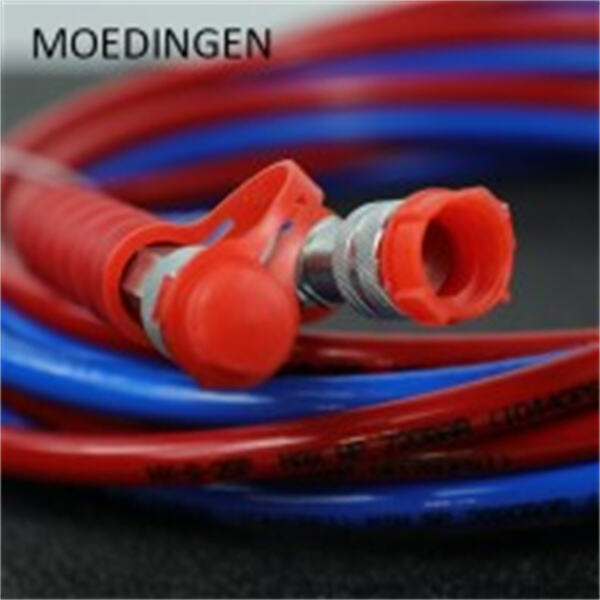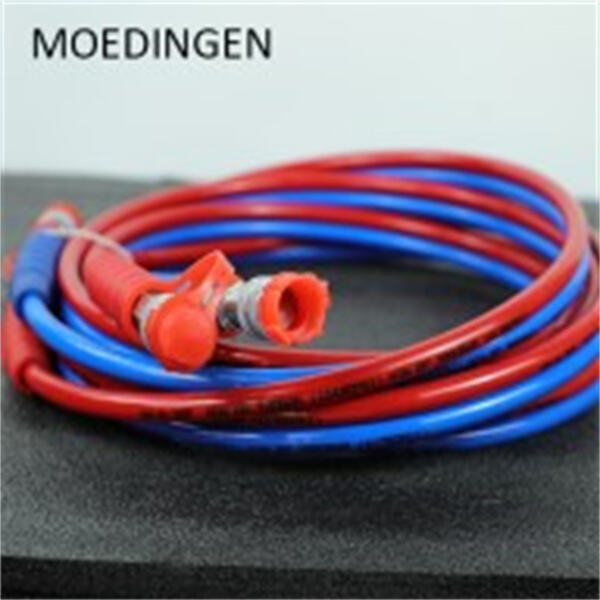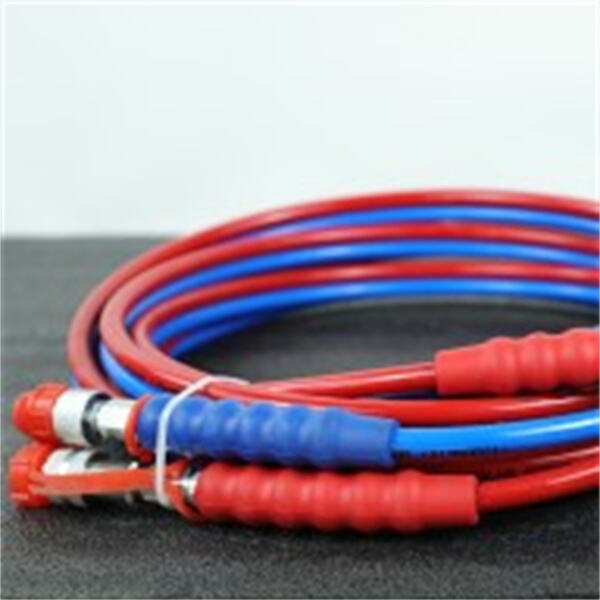Wenn Sie jemals einen Basketball aufgepumpt oder mit dem Fahrstuhl gefahren sind, kennen Sie dies… Nun, genau das macht auch Ihr kleiner günstiger Hubmotor, er nutzt etwas, das Hydraulik genannt wird! JA Wissenschaft Hydraulik ist die Wissenschaft davon, wie Flüssigkeiten sich bewegen und Dinge besser funktionieren lassen. Es gibt etwas sehr Spannendes an der Idee, dass Flüssigkeiten Energie erzeugen können und uns ermöglichen, eine Vielzahl von Aktivitäten durchzuführen. Bestimmte Teile Ihres Motorrads, wie das Bremsystem, benötigen sogar die Kraft, die Hydraulik liefert, damit Sie im Bruchteil einer Sekunde anhalten können!
Die Schlauch arguably der wichtigste Teil in einem Hydrauliksystem. Ein Schlauch ist einfach ein langer, hohler Rohr, der Flüssigkeit von Punkt A zu Punkt B transportiert. Der Schlauch ist integral für ein Hydrauliksystem, da er in der Lage sein muss, den Druck von welcher auch immer Flüssigkeit, die durchfließt, zu tragen. Der Schlauch kann platzen und dies ist nicht sicher, was zu großen Schäden führen kann, auf eine Art oder die andere, wenn du ihn verwendest.
Genau wie Sie Ihren Körper mit gesundem Essen und Sport pflegen müssen, haben Sie auch Ausrüstung, die Wartung benötigt, damit sie weiterhin funktioniert! Dies ist insbesondere bei Maschinen mit Hydrauliksystemen üblich, zum Beispiel Autos, Aufzüge und Baumaschinen. Was die Schläuche und Hydraulik betrifft, kann eine ordnungsgemäße Pflege Sie für Jahre vor Reparaturen an Ihren Maschinen bewahren.
Eine Möglichkeit, Schläuche zu pflegen, besteht darin, sie regelmäßig auf offensichtliche Schwachstellen und Einschnitte zu überprüfen. Wenn der Druck dieser Flüssigkeit durch alte oder beschädigte Schläuche fließt, besteht die Gefahr, dass es zu einem Leck oder sogar zu einem Versagen kommt. Das kann sehr gefährlich sein! Auch der Pegel der Flüssigkeit im Hydrauliksystem muss sauber und auf dem richtigen Füllstand gehalten werden. Eine schmutzige Flüssigkeit kann den Schläuchen und den internen Komponenten Ihres Systems schaden, wodurch die Effizienz reduziert und zukünftige Probleme verursacht werden.

Ein wichtiges Kriterium ist, welche Art von Flüssigkeit durch den Schlauch fließen wird? Wenn nicht, können unterschiedliche Chemikalien dazu führen, dass sich der Schlauch in bestimmten Eigenschaften verändert. Einige sind dicker, andere können kochend heiß oder eiskalt sein (nur um ein paar Beispiele zu nennen). Auch die Temperatur und der Druck der Flüssigkeit spielen eine entscheidende Rolle bei der Effektivität des Schlauchs (und damit auch anderer Teile Ihres Systems). Die Auswahl des Schlauchtyps ist entscheidend, um zu verhindern, dass Ihr Betrieb in ein chaotisches Durcheinander gerät.

Darüber hinaus sind Hydrauliksysteme nicht einheitlich; es gibt verschiedene Arten je nach der spezifischen Funktion, die sie erfüllen. Ventile steuern in manchen Hydrauliksystemen den Flüssigkeitsfluss durch Schläuche, während Motoren oder Pumpen ihn elektronisch bewegen. In vielen Branchen wie dem Bauwesen, der Fertigung und sogar in Flugzeugen findet man verschiedene Arten von Hydrauliksystemen. Jedes System führt spezifische Aufgaben aus, um unser Leben zu erleichtern.

Ein weiteres großartiges Beispiel für neue Technologie: intelligente Schläuche. Einige neue Schläuche verfügen über integrierte Sensoren, um ihren Druck, ihre Temperatur und andere oft wichtige Dinge zu überwachen. All diese Daten können an den Benutzer gesendet werden – so müssen sie nicht in alle hydraulischen Ecken und Winkel kriechen, um zu sehen, wie jedes System funktioniert. Auf diese Weise können Sie Probleme erkennen, bevor sie ernsthaft werden, und alles läuft reibungslos.